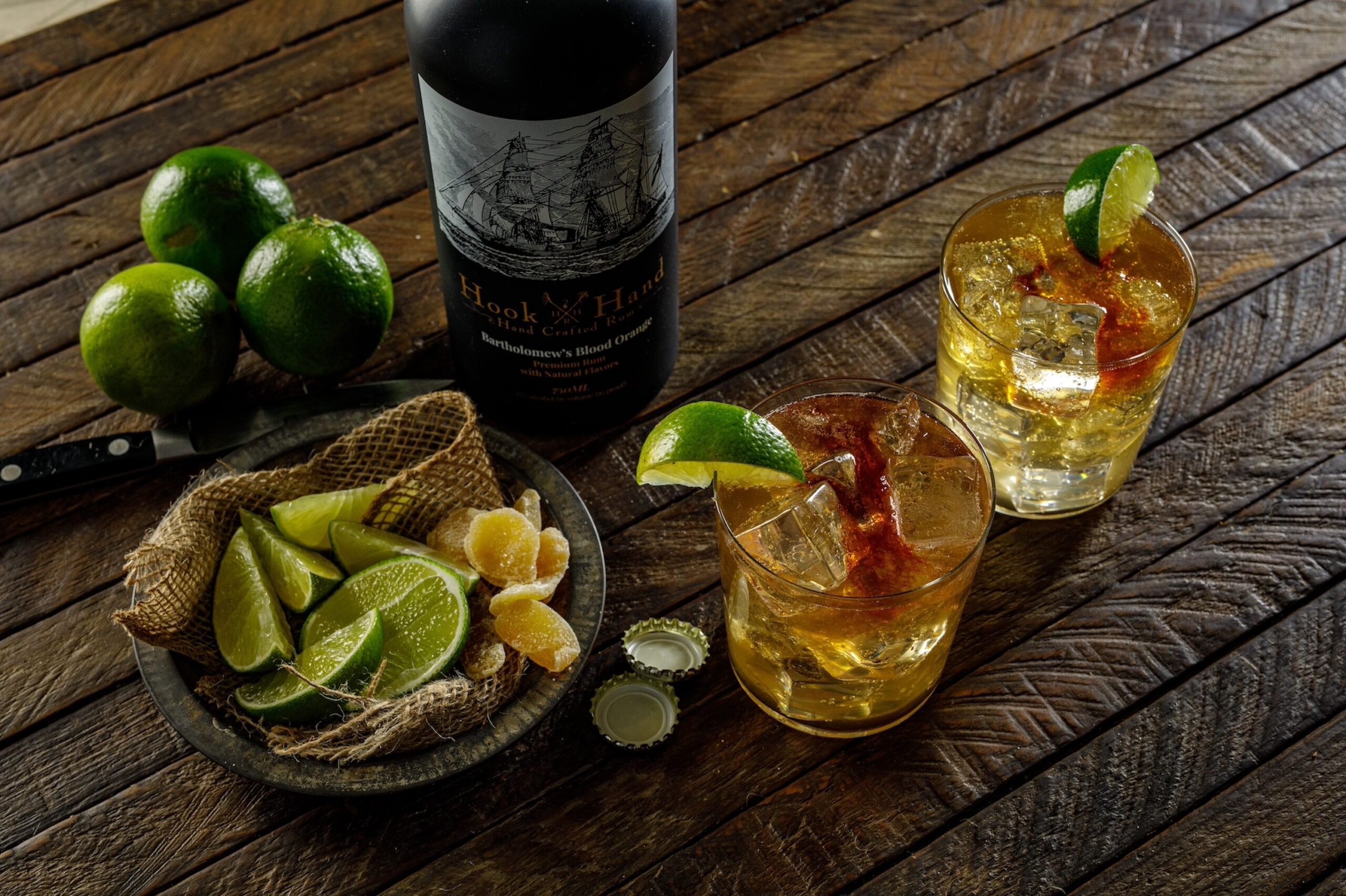In this case study below, you will learn how Hook Hand Rum was able to support its launch and expand into new territory with Park Street. We cover a brief history of how the father-and-son team became co-founders of the brand, how they created a business model from scratch, the market entry challenges they faced, and the solutions they employed through Park Street.

The Founding of Hook Hand Rum
Hook Hand Rum started as a concept in 2018 via Dan and Andrew Olson, a father-son team with a unique perspective on the industry. Former marketing and branding veterans with a background in on-premise bar environments, the duo looked to leverage their experience and build a premium, experience-forward rum brand.
From his time in the bar industry, Andrew Olson observed a growing demand for premium spirits, yet he noticed a gap in this price tier within the rum market. Compared to whiskey and tequila, for which brands were being rolled out left and right in the late 2010s, the premium rum segment was underdeveloped. Recognizing the opportunity, they set out to create a rum brand with a compelling story and a smooth, universally appealing product.
To appeal to a broader consumer base, the Olsons decided to make their rum more approachable by lowering the traditional proof content. They also chose to incorporate blood orange and citrus flavor profiles, another underdeveloped angle within the rum segment. Hook Hand Rum was officially launched in January 2023, after overcoming significant challenges posed by COVID-19, supply chain disruptions, and historic inflation.
Creating a Business Model as Industry Outsiders
Given that the duo had no distillation background and the significant cost posed by building a distillery from scratch, the Olsons had to construct a flexible business model that would allow their rum to come to market without spending years aging spirits.
To do this, Hook Hand turned to a contract distillery and employed a flash-aged technique that allowed them to begin with rum from Puerto Rico, impart the flavors and color of the oak they were looking for, and get their product onto shelves within nine weeks.
Hook Hand then turned to Green Glass Global, a sales organization that enabled the brand to leverage dedicated sales representatives in a variety of markets.
Finally, Hook Hand Rum turned to Park Street, a premier provider of back-office solutions for the spirits industry, to overcome the challenges common to entrepreneurs launching a new brand in a crowded and highly regulated industry like beverage alcohol.
“I’m a marketer by trade. Our expertise lies in being good marketers and making that connection with consumers. With Park Street, we get a team, and as a result, we don’t really have to worry about the running of the logistics parts of the business,” reflected Dan Olson.
Below, we’ll break down some obstacles that many new brands encounter and some possible solutions to overcome these challenges.
Market Entry Challenges for a Rum Producer
Problem #1: Distribution and Warehousing
Ensuring a smooth and efficient distribution model was crucial for Hook Hand. The founders understood that creating a premium rum wouldn’t be enough without the ability to scale their operations efficiently.
Solution:
Park Street’s warehousing solutions have allowed Hook Hand Rum to store its product strategically across several key markets, ensuring that inventory is readily available in California, Florida, New Jersey, and New York—four of the top five rum markets in the U.S.
With this in place, Hook Hand Rum is able to focus on expanding its brand without the burden of managing warehouse logistics. Guaranteed distribution in these states enabled Hook Hand Rum to enter markets that would have otherwise been difficult for a small brand to penetrate.
Problem #2: Logistics and Compliance
The complex three-tier alcohol distribution system in the U.S. posed a significant barrier to entry. In the early days, navigating regulations and managing inventory were overwhelming aspects for the small team.
Solution:
Park Street’s sophisticated logistics tools offer Hook Hand Rum a digital dashboard that allows them to monitor real-time data on inventory, sales, and depletion. This has been instrumental in helping the team make informed decisions about production and distribution. Hook Hand Rum can maintain a lean business model, avoiding overproduction and minimizing warehousing costs.
Another standout benefit of the partnership for Hook Hand is Park Street’s careful handling of last-mile delivery. Rather than relying on standard carriers like FedEx, which can pose risks such as lost or damaged shipments, Park Street ensures that products are delivered with care, minimizing the risk of problems with final deliveries.
From a compliance standpoint, Park Street’s in-depth knowledge of alcohol distribution regulations allows Hook Hand Rum to remain compliant with U.S. federal and state laws without dedicating significant internal resources to navigating complex legal hurdles. This has been a crucial element in enabling the brand to focus on marketing and product development.
A Unique Approach to Brand Building
While many spirits companies start from the foundation of developing a high-quality liquid and building a brand around that, Hook Hand Rum took an inverse approach. “A lot of companies try to make the ultimate juice and release it to market to see how it does when they just don’t understand how to get people into that brand” noted Andrew Olson.
The Olson’s thought about the brand first and built it to connect with people. Pair with a high-quality product, an emphasis on branding and marketing is what the duo attributes to much of its success.
Thanks to Park Street’s ability to reduce the logistical burdens of market entry, Hook Hand Rum was able to achieve growth quickly by focusing on the aspects of branding and marketing where their expertise lies.
